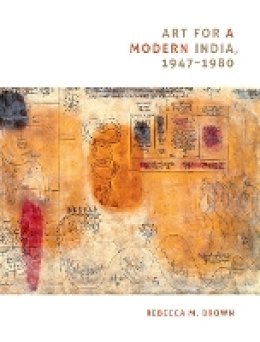
Art for a Modern India, 1947-1980
Rebecca M. Brown
Through close analyses of specific objects of art and design, Brown describes how Indian artists engaged with questions of authenticity, iconicity, narrative, urbanization, and science and technology. She explains how the filmmaker Satyajit Ray presented the rural Indian village as a socially complex space rather than as the idealized site of “authentic India” in his acclaimed Apu Trilogy, how the painter Bhupen Khakhar reworked Indian folk idioms and borrowed iconic images from calendar prints in his paintings of urban dwellers, and how Indian architects developed a revivalist style of bold architectural gestures anchored in India’s past as they planned the Ashok Hotel and the Vigyan Bhavan Conference Center, both in New Delhi. Discussing these and other works of art and design, Brown chronicles the mid-twentieth-century trajectory of India’s modern visual culture.
Product Details
About Rebecca M. Brown
Reviews for Art for a Modern India, 1947-1980
Melissa Aho
ARLIS/NA Reviews
“An interesting contribution, this book will be useful in general and undergraduate libraries. Summing Up: Recommended. Lower-level undergraduates through faculty/ researchers; general readers.”
E. Findly
Choice
“Bringing together a range of disparate but linked examples, Brown's text makes for stimulating reading–an essential text for any student of the arts, postcolonialism, and the interaction of science and arts in the postcolonial context.”
Aparna Sharma
Leonardo Reviews
“Rebecca Brown’s elegant and conceptually driven account of modernism focuses on the decades following Independence. . . . Brown’s approach is highly satisfying. By cutting across media and juxtaposing artists whose aesthetic commitments and backgrounds are presented as incommensurate within the internal debates of the Indian art world, Brown challenges the specialist. But she also gives the general reader an overarching sense of what conceptual problems faced Indian artists and, just as importantly, why those problems emerged as such. It is a particularly fitting approach for a period of art history that is dominated by studies focusing on single artists, artist groups, and institutions.”
Karin Zitzewitz
Art History
